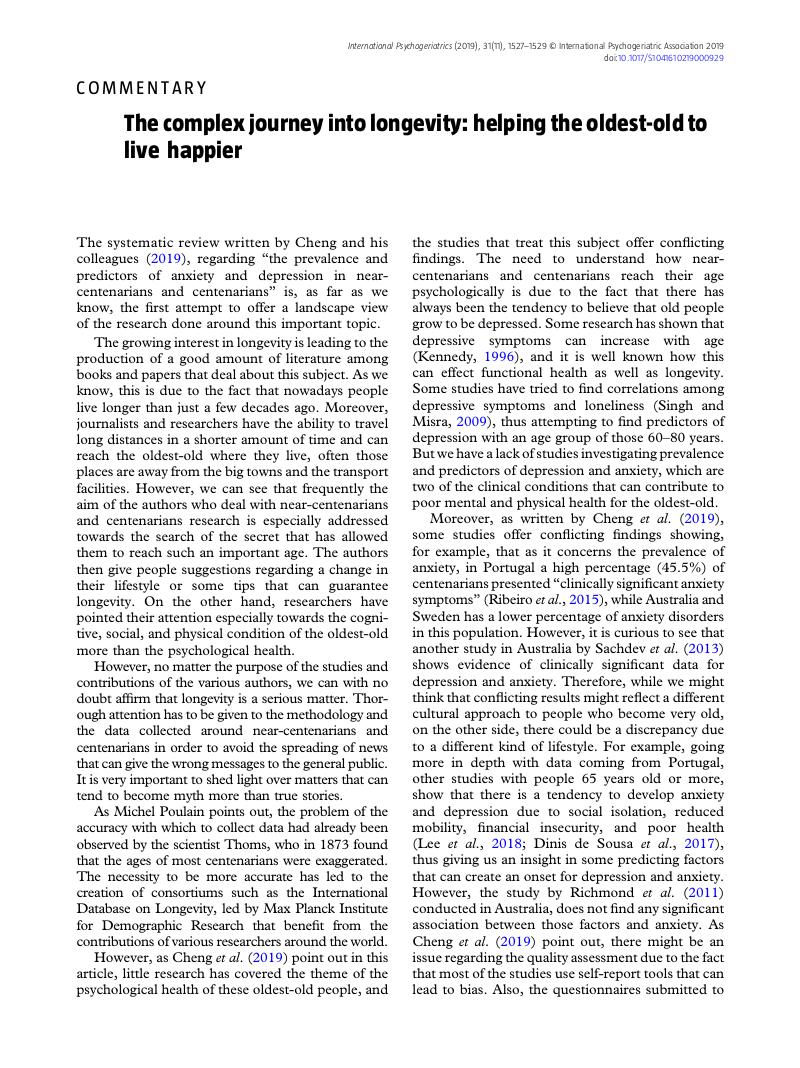Crossref Citations
This article has been cited by the following publications. This list is generated based on data provided by Crossref.
Cheng, Adrian
Leung, Yvonne
and
Brodaty, Henry
2022.
A systematic review of the associations, mediators and moderators of life satisfaction, positive affect and happiness in near-centenarians and centenarians.
Aging & Mental Health,
Vol. 26,
Issue. 4,
p.
651.



